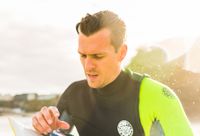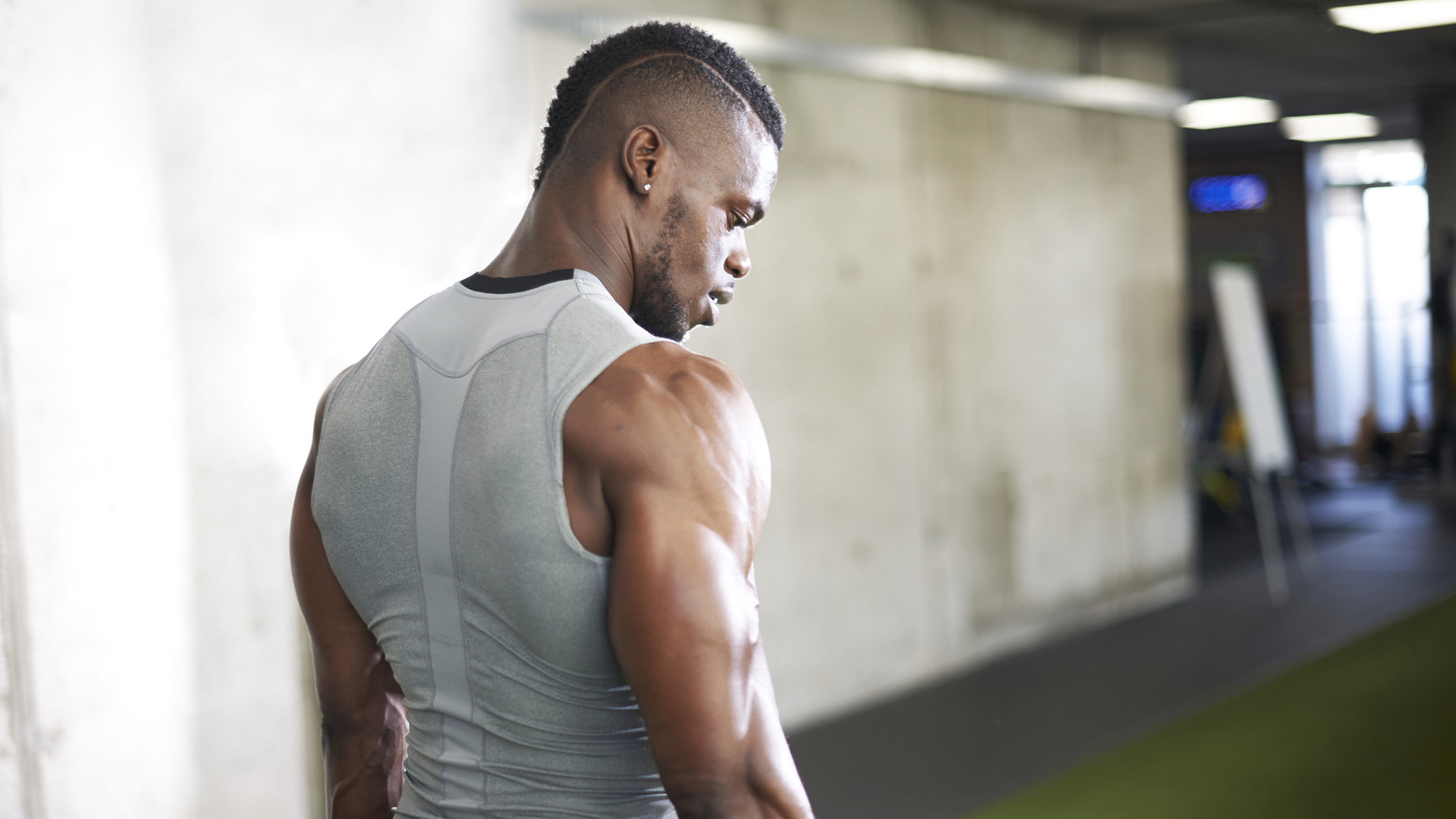
If you want to get big shoulders you have come to the right place. Our recent shoulder workout feature from master trainer Nathan Williams was so popular, we have now folded it into this, our original guide to those seeking big arms and a pleasing V shape, by using the best shoulder workout.
Being broad shouldered was once considered the height of manliness, before the days of six-packs, getting swole arms and, of course, big calves. But now delts – as shoulder work experts call them – are having their day again. Just look at Chris Hemsworth. Go on: look at him. He has a workout programme too, called Centr.
Shoulders are actually a very significant part of your arms. If you're a discerning gym-goer, you'll know that the bicep is a small muscle and it doesn't contribute all that much to how your arms look. If you want to really increase upper arm circumference, train your triceps. If you want to look good in a long sleeved t-shirt or in a jumper, and want suits to just 'hang' off you, pay attention to your shoulders.
- Jump to Nathan Williams' shoulder workout: our most popular ever
- Best protein powder deals: useful for ALL muscle building
- Bowflex Selecttech 1090i: the ultimate home weights
- There's one easy way to get bigger arms… and it's not what you think
Why exercise your shoulders?
Shoulders can enhance the way you look massively. A pair of nice, rounded shoulders will make you look good, a force to be reckoned with. But there is a golden rule to follow if you want to look like Ryan Gosling in the shower scene in Blade Runner 2049: train all sides of your shoulders for a proper 3D look.
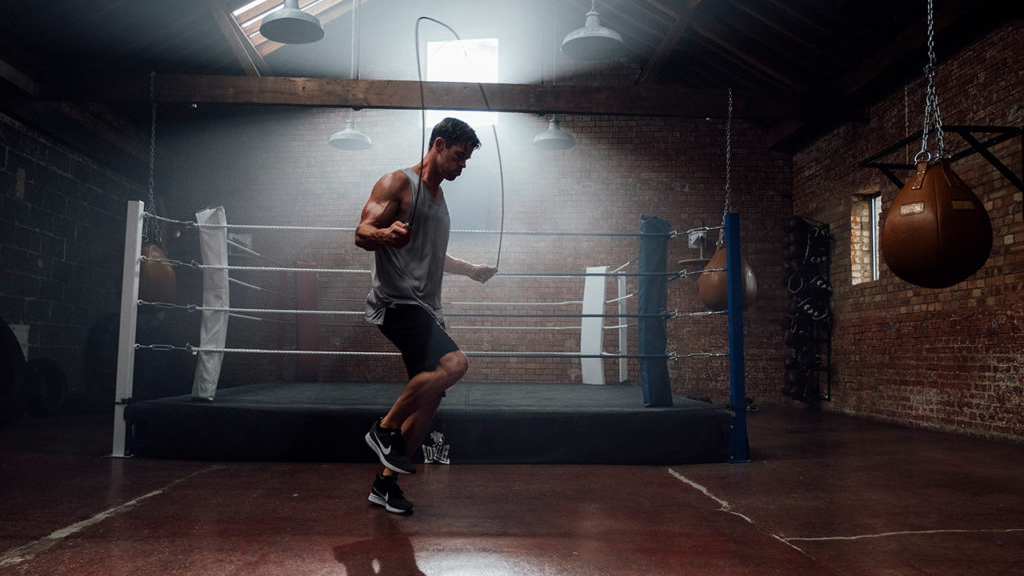
Chris Hemsworth's arms are pretty decent, too. You can follow his workout and diet plan using the Centr app.
The golden rule of exercising your shoulders: train it all, not just the sides
The are three areas of the shoulder muscles: the front, the side and the back. Now, it might sound condescending to say that a three dimensional object has sides all over, but what people often forget is that this means that all areas need work in order for them to be activated.
The front of your shoulder is easy to train: most exercises involving pushing things away from you will activate this muscle, with the bench press being the most obvious example. If you want to further activate this part, you can also do front dumbbell raises.
The side of the shoulder is the biggest part of the muscle and most well-known, shoulder-specific exercises you do for shoulders will activate this area. Side lateral raise, overhead press and seated press can all help to add to the bulk of your shoulders.
Get all the latest news, reviews, deals and buying guides on gorgeous tech, home and active products from the T3 experts
The back of the shoulders are often forgotten, although they are equally as important as the other parts. This part can also help you improve your posture; a slumped shoulder is often stemmed from these muscles not being strong enough to hold the shoulders back. To train the back of the shoulders, do reverse flyers, either on a machine or just bent over with dumbbells. You can use a weights bench too, set in a 30º angle to support your chest.
When exercising the back of the shoulders, pay extra attention to the muscle. If you reach over with the other hand, move your shoulder back and feel what area is being activated just behind the side of your shoulder. Concentrate on this area when performing reverse flyers.
Gear to improve your performance
- Best workout shoes: safely and effectively squat, leap and lift your way to fitness with the best gym shoes
- Best fitness watch: track workouts, steps and sleep
- Best kettle bells: versatile workout companion
Get big shoulders with this workout from leading PT Nathan Williams
To get big arms, the best shoulder workouts are a sure-fire route to success. Logically enough since, as doctors tell us, your shoulder bone is connected to your arm bone. (Now hear the word of the lord.) Anyone wanting to build a bigger physique or pack on muscle should pay attention to the shoulders. They are often described as 'the foundation of any physique", as broad shoulders give the illusion of a smaller waist and create the v-shape that those wishing to fill a t-shirt aspire to (whilst also working out how to get a six pack, natch).
"The shoulders are a complex joint, made up of several different muscles, allowing them to move in a range of different directions, says Nathan Williams, Personal Trainer, Body Building World Champion and Grenade sports nutrition ambassador.
"This means you can get creative with your shoulder workouts, as there are so many movements and exercises out there to try. This is why shoulders is one of my favourite muscle groups to train, as it’s so easy to keep the sessions interesting," he adds.
- More of the best shoulder exercises for big arms – with pictures!
- You'll need weights for this workout. These are the best dumbbells
- Ditch the gym membership and get a weights bench for home
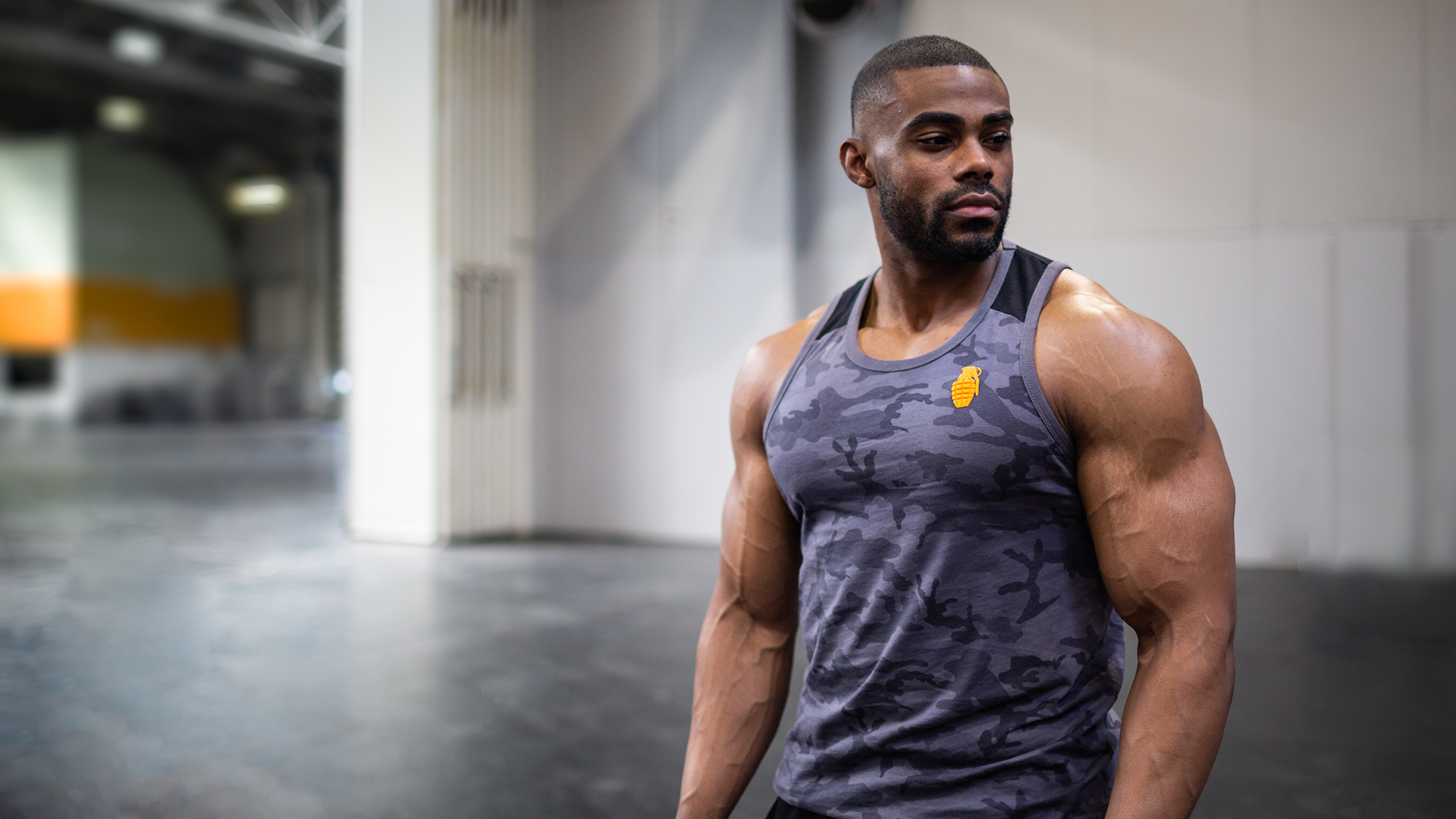
Best of the vest: Grenade ambassador Nathan Williams
The science bit: anatomy of shoulder muscles
Before we get into the routine, let’s talk about the make-up of the shoulders. We don’t want to complicate things, so we will start by covering the three key muscles groups, so you get a better picture of what requires movement and load to increase mass.
Anterior Deltoid
The anterior deltoid, located on the front of your shoulders, is primarily responsible for shoulder abduction and allows you to raise your arms in front of your body. Bulk these up to efficiently fill T-shirt sleeves and create a nice shape to the top of the arms.
Medial Deltoid
Located on the sides of your shoulders, the medial deltoid is, similar to the above, responsible for shoulder abduction. It also allows you to raise your arms outwards to the side of your body. Adding mass to these helps increase the v-shape we mentioned earlier.
Posterior Deltoid
This muscle is on the back of your shoulders and its role is external shoulder rotation and transverse abduction. Learning to activate these by pulling the shoulders back and down towards your butt is a great way of stabilising other, heavy lifting exercises, such as the deadlift and overhead press.
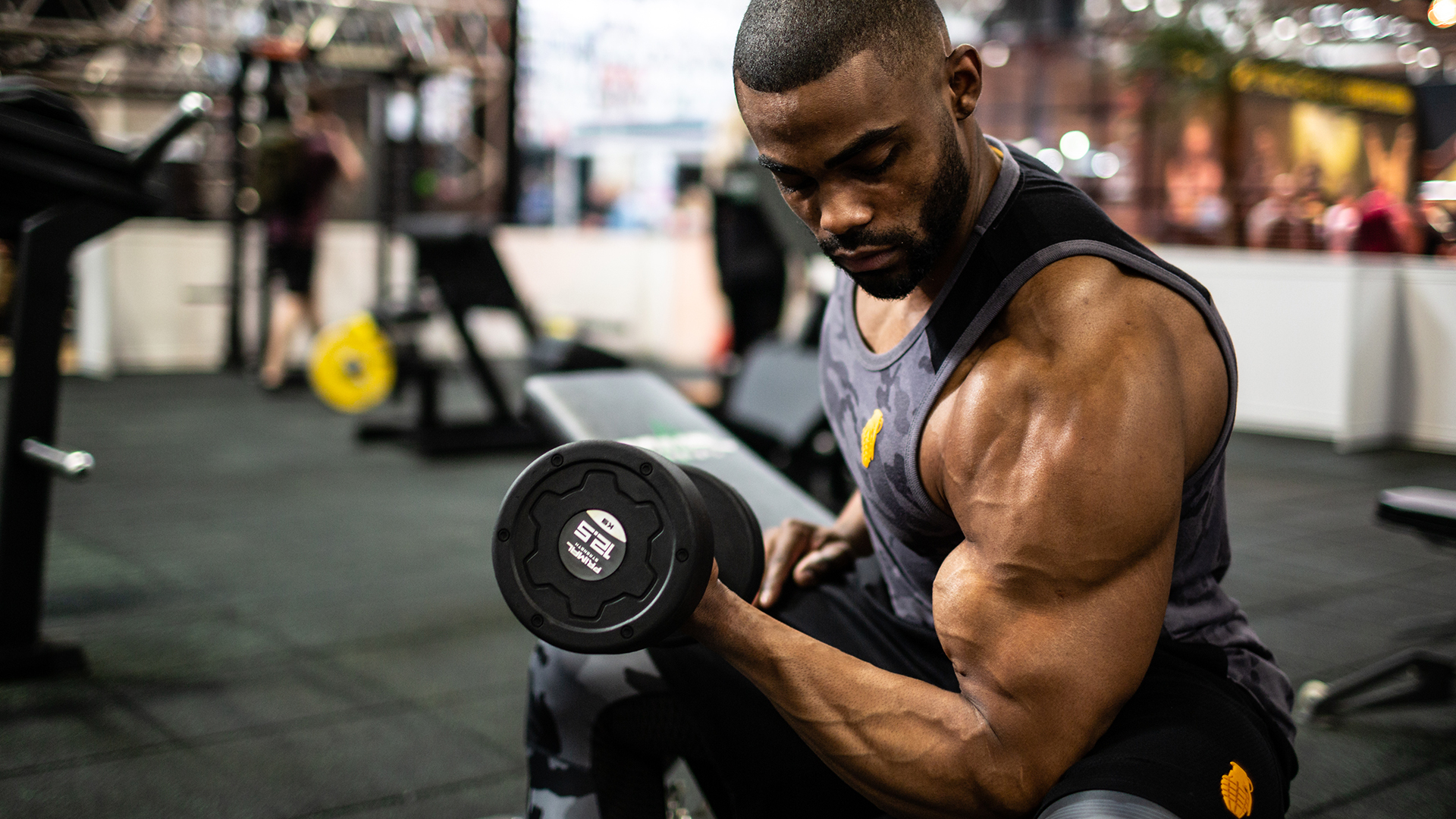
Shoulders and biceps working in harmony
What’s the best routine to build bigger shoulders?
- Best protein powder
- Best protein bars – including Grenade's own Carb Killa
So, now we know what each muscle does, let’s put together a routine to help build those boulder shoulders.
"I always like to start any routine with exercises where I can shift the most amount of weight. The more weight you lift, the more the muscle fibres will be recruited, meaning more gains!" explains Nathan.
"After the heavy compounds are completed, I then add in isolation exercises, paying attention to each muscle of the shoulders," he adds.
Below is a quick outline of a fast and efficient shoulder routine, which can be performed in any gym or can largely be completed with a good set of dumbbells - preferably a set that allows for weight to be added over time.
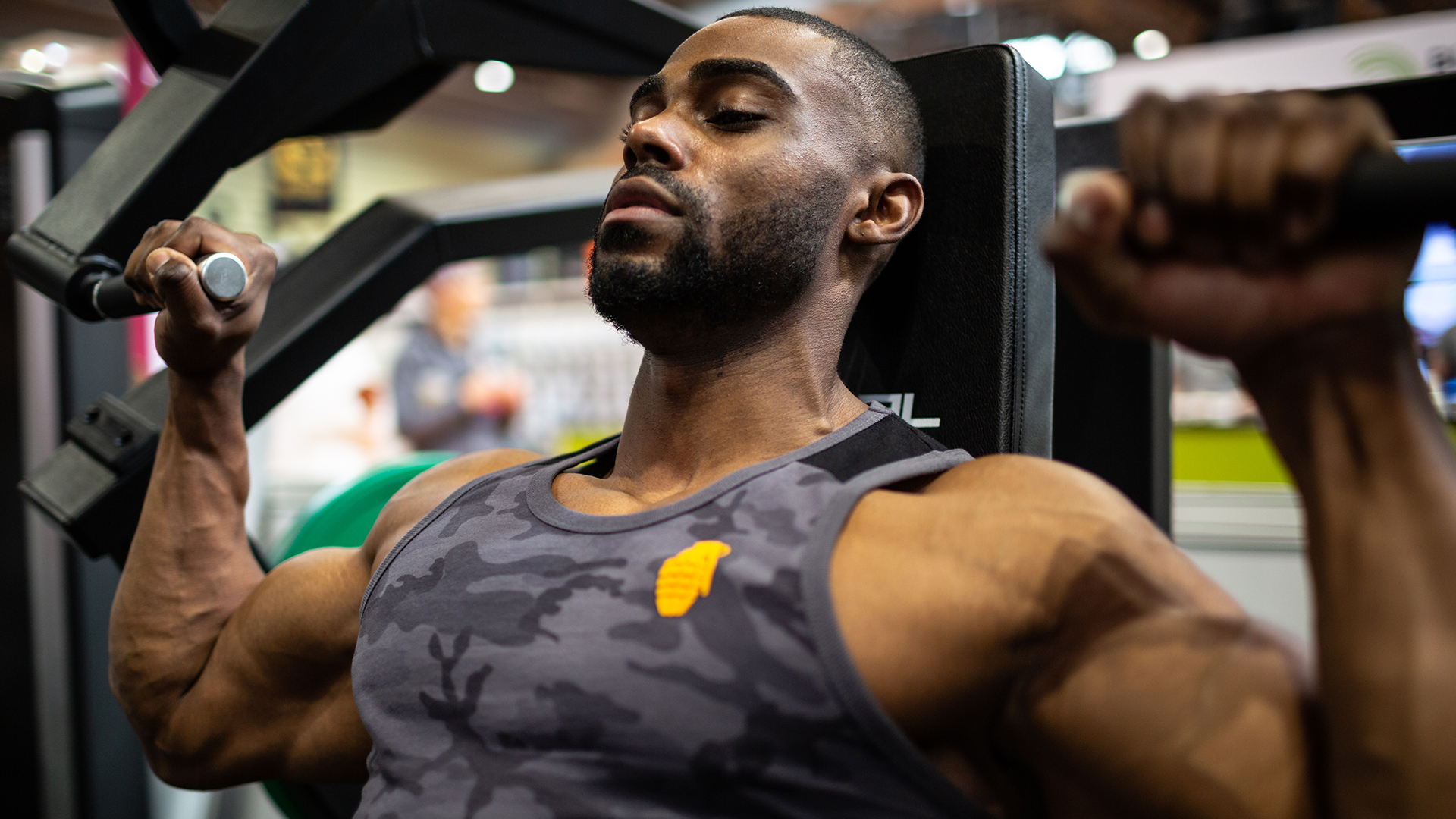
Nathan feels the benefits of a superset pump
Seated dumbbell shoulder press
3 sets of 6 reps
Grab a set of dumbbells and secure an empty bench in the gym or at home. Sit on the edge of the bench and avoid pressing the back into a pad. It is best to stabilise using the abdominals here.
With feet planted to support your weight and palms facing outwards, dumbbells resting just in front of the shoulders, press the dumbbells straight above your head, remembering to activate the posterior deltoid. Don't allow the dumbbells to clank together at the top, but instead finish the moves just before the elbows lock out. Pause and lower slowly. Repeat.
Hammer strength shoulder press
3 sets of 10 reps
This exercise requires a fairly specialist piece of machinery that can be found in most commercial gyms. the beauty of this machine is that it can be loaded with particular heavy weights, without the need for a spotter.
The movement is self explanatory, but ensure posture is correct when lifting big, as there can be a temptation to round the lower back for that additional push. This could lead to injury.
Standing dumbbell lateral raises
3 sets of 15 reps
Standing in a shoulder-width stance, grab a pair of dumbbells with palms facing inward and let them hang at your sides. Start off light with this move and gradually increase as the weeks go on.
Raise the arms up and out to the sides, ensuring the elbows remain high and thumbs point towards each other and slightly up toward the ceiling. Don't over rotate and point thumbs to the floor. Pause at the top and lower slowly, ensuring you you activate all of the shoulder muscles.

Grenade ambassador Nathan Williams rocks boulder shoulders
Plate front raises
3 sets of 15 reps
Grab a weight plate in the gym or hold a single dumbbell at each end. Start with your chosen weight out in front of your waist, activate the shoulder muscles and pull the weight up and out in front of you, keeping the elbows almost locked out.
Pause at the top of the movement and lower slowly. It is a good idea to adopt a nice, smooth tempo on the lowering portion of this exercise, as it keeps the muscles under tension for longer.
Chest supported dumbbell reverse flies
3 sets of 15 reps
You'll need an adjustable workout bench for this one and it needs to be set at around a 45-degree angle. Lay on the bench with your chest pressed into the padding, head and neck above the cushion.
Pick up a set of light dumbbells (ideally positioned on the floor next to the bench so you can grab them easily) and let them hang. Activate the shoulder muscles by 'puffing' the chest out and bringing the shoulders back, bending the elbows slightly. Without letting your shoulders shrug up to your ears, bring the weights apart in a reverse fly fashion, pause at the top and lower slowly for a single rep.
Cable to face pulls (using a rope)
3 sets of 15 reps
Again, this requires a specialists piece of equipment typically found in commercial gyms, but it is an excellent way to finish a tough shoulder workout. Assume a solid, square stance with the rope in front, set above your head.
Grab the rope with palms facing inwards, inhale and pull the rope towards your face, keeping the elbows high and 'parting' the rope so the move finishes with forearms at a 90-degree angle to your bicep, which in turn are at a 90-degree angle to the floor.
Don't go too heavy with this one and make sure the rope is pulled right back, with shoulders pinned back and down towards the floor. This will ensure you are activating the correct muscle groups.

Matt Kollat is a journalist and content creator who works for T3.com and its magazine counterpart as an Active Editor. His areas of expertise include wearables, drones, fitness equipment, nutrition and outdoor gear. He joined T3 in 2019. His byline appears in several publications, including Techradar and Fit&Well, and more. Matt also collaborated with other content creators (e.g. Garage Gym Reviews) and judged many awards, such as the European Specialist Sports Nutrition Alliance's ESSNawards. When he isn't working out, running or cycling, you'll find him roaming the countryside and trying out new podcasting and content creation equipment.
